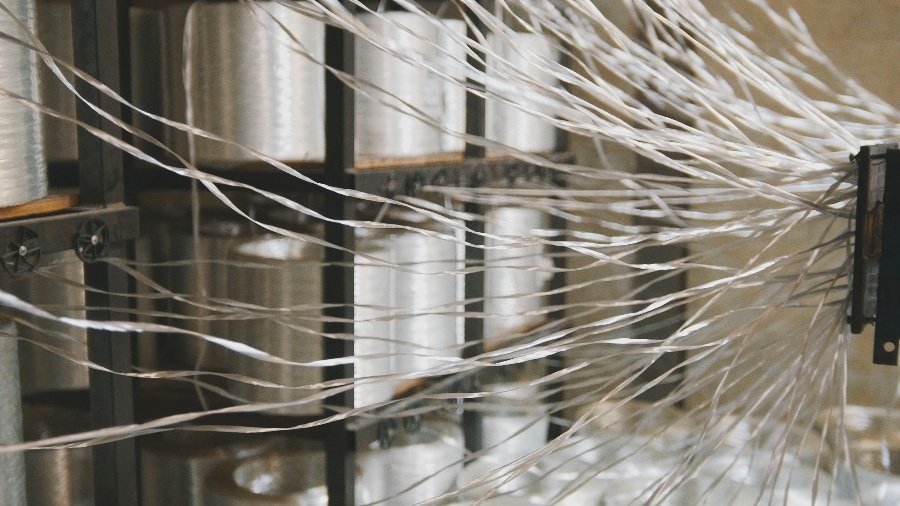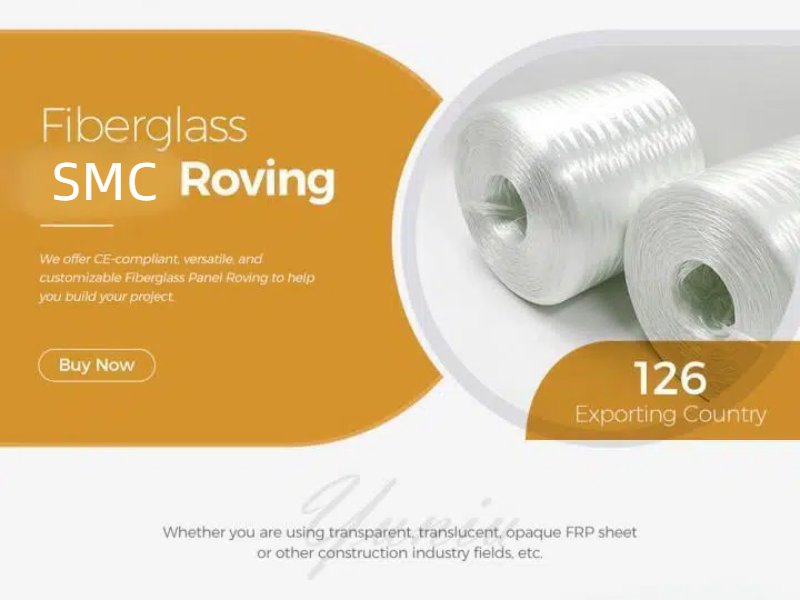
- fiberglassnicole@gmail.com
- +86-13933702587

With the rapid development of modern technology and the booming global economy, the shipbuilding industry, as one of the main carriers of international trade and ocean transportation, is facing increasingly severe challenges and opportunities. Against this background, composite materials, as a new type of material with excellent properties such as lightweight, high strength, and corrosion resistance, are gradually becoming the focus of attention in the field of shipbuilding.
The application of composite materials can not only improve the performance and efficiency of ships, but also reduce maintenance costs and environmental pollution, so it is of extremely important significance in the shipbuilding industry.
In addition, the corrosion resistance of composite materials is also one of the important reasons why they are favored in the shipbuilding industry. The salt and humidity in seawater can easily cause corrosion of ship materials. Traditional metal materials are easily affected by corrosion and reduce their service life. Due to its chemical stability and corrosion resistance, composite materials can effectively resist seawater erosion, thereby extending the service life of the ship and reducing maintenance costs.
In the early stages of shipbuilding, traditional materials such as wood, metal, and concrete were the primary shipbuilding materials. However, with the continuous expansion of ship scale and the improvement of performance requirements, traditional materials have gradually shown some limitations, such as excessive weight and easy corrosion. Therefore, people began to seek new materials to meet the needs of ship manufacturing, and composite materials came into being.
The earliest marine composites date back to the 1960s, when fiberglass was first used in shipbuilding. Glass fiber has good corrosion resistance and mechanical strength. Compared with traditional metal materials, it is lighter and easier to process, and can meet certain ship construction needs. Early fiberglass ships were mainly used in small boats and recreational boats, but their applications in large commercial ships and warships were still relatively limited.
With the continuous development of carbon fiber technology, carbon fiber has gradually become one of the main materials in ship manufacturing. Carbon fiber has higher strength and stiffness than fiberglass while being lightweight, which allows the hull to reduce its own weight while maintaining strength, thereby increasing the ship’s speed and fuel efficiency. From the late 1970s to the early 1980s, with the gradual maturity and promotion of carbon fiber technology, more and more ships began to use carbon fiber as the main structural material.
As a traditional composite material in shipbuilding, glass fiber has excellent corrosion resistance and mechanical strength, but is slightly inferior to carbon fiber in terms of weight and stiffness. Despite this, fiberglass still has its place in shipbuilding, especially in applications such as small boats and ship interiors.
The use of these composite materials enables ships to reduce their own weight while maintaining strength, improve the speed and fuel efficiency of ships, and inject new vitality into the development of the shipbuilding industry.
With the continuous development of science and technology, various new composite material technologies continue to emerge, bringing new development opportunities to the shipbuilding industry. Among them, new material technologies such as polymer-based composite materials, organic glass, and carbon nanotubes are leading the technological evolution of the shipbuilding industry.
Polymer matrix composite materials are currently the most common new material technology in ship manufacturing. Common reinforcing fibers for this type of composite materials include glass fiber, carbon fiber and aramid fiber. The resin matrix usually uses epoxy resin, polyimide resin, etc.
It has the advantages of light weight, corrosion resistance, and easy processing, and can meet the manufacturing needs of ship structures and cabin components. By using different reinforcing fibers and resin matrices, polymer matrix composites can match a variety of properties, thereby improving the overall performance and service life of the ship.
Plexiglas is a new type of transparent composite material. Common types of plexiglass include polymethyl methacrylate (PMMA).
It has excellent light transmittance, weather resistance and chemical stability, so it is widely used in the manufacture of transparent parts such as cabin windows and lamps in ship manufacturing. The use of plexiglass is not only beautiful and elegant, but also has high strength and corrosion resistance, which can effectively ensure the safety of the crew.
Carbon nanotubes are one of the emerging materials in the field of shipbuilding in recent years. They have extremely high strength and stiffness and are light in weight. They are one of the ideal structural materials. The introduction of carbon nanotubes allows ships to reduce their own weight while maintaining strength, further improving the speed and fuel efficiency of ships, and is expected to become one of the important materials for future ship manufacturing.
The emergence and application of new composite material technologies have brought new development opportunities to the shipbuilding industry. Various types of advanced composite materials have different characteristics and advantages and play an important role in improving ship performance, safety and environmental protection, providing broad space for the future development of the shipbuilding industry.
Many foreign shipbuilding companies began to adopt composite materials on a large scale decades ago. For example, high-end yacht manufacturers such as Lancer Yachts, Pelle Petterson and Swan Yachts in the United States, as well as high-end Motor Yacht manufacturers in Japan, all use composite materials extensively to manufacture hulls and ship structures. Use cases from these companies show that composite materials have obvious advantages in improving ship performance, reducing weight, and improving corrosion resistance.
Chinese shipbuilding companies have also gradually made progress in the application of composite materials. For example, China’s China Shipbuilding Industry Corporation and China State Shipbuilding Corporation and other shipbuilding giants have begun to use composite materials in the manufacture of hulls, cabins and ship structures. Especially in the field of high-end shipbuilding such as speedboats and yachts, Chinese companies have made certain achievements, demonstrating the potential and application prospects of composite materials in the shipbuilding industry.
Speedboats and yachts were among the early adopters of composite materials in the marine industry. Such ships usually require lightweight, high speed and beautiful appearance, and composite materials can meet these requirements, so they are popular in the market.
In addition to high-end yachts, composite materials are also used in commercial ships. For example, ships such as commercial cargo ships, passenger ships, and fishing boats have also begun to use composite materials as hull and structural materials to reduce the weight of the ship, improve fuel efficiency, and thereby reduce operating costs.
In the field of military ships, the application of composite materials is also gradually increasing. For example, military patrol boats, submarines and ships need to have high speed, stealth and corrosion resistance. The lightweight, high strength and corrosion resistance of composite materials make it an ideal choice for military shipbuilding, which can improve the ship’s combat effectiveness and survivability.
The application cases of composite materials in the shipbuilding industry are rich and diverse, covering different types of ships such as speedboats, yachts, commercial ships and military ships. Domestic and foreign shipbuilding companies are actively exploring the application of composite materials in shipbuilding, injecting new vitality into the development of the shipbuilding industry.
With the continuous advancement of science and technology, the application of composite materials in the shipbuilding industry will continue to innovate. In the future, more new composite materials may emerge, such as nanocomposites, bio-based composite materials, etc., to meet the increasing needs of shipbuilding for performance, environmental protection and safety.
In the future, intelligent and digital technologies will be combined with composite materials to achieve precise design and manufacturing of ship structures. Through the application of big data, artificial intelligence and other technologies, the combination and structural design of composite materials can be optimized, personalized and customized ship solutions can be achieved, and the performance and efficiency of ships can be improved.
The relatively high manufacturing cost of composite materials may limit their widespread application in the shipbuilding industry. One of the solutions is to reduce the manufacturing cost of composite materials through technological innovation and production process optimization.
The manufacturing and processing process of composite materials is relatively complex and requires mastery of high-end manufacturing technology and equipment. The solution can be to strengthen talent training and technical exchanges, and improve the technical level and production capacity of shipbuilding companies to better cope with the manufacturing challenges of composite materials.
At present, the standards and specifications of composite materials in the shipbuilding industry are not mature enough, which may affect their application in shipbuilding. The solution can be to strengthen the research and formulation of standards and specifications, and establish sound composite quality standards and testing processes to ensure the quality and safety of composite materials.
The future development prospects of composite materials in the shipbuilding industry are broad, but they also face some technical challenges. Through technological innovation, cost reduction, process optimization and the establishment of standard specifications, these challenges can be overcome, the widespread application of composite materials in the shipbuilding industry can be promoted, and the sustainable development of the shipbuilding industry can be achieved.
The application of composite materials in the shipbuilding industry has become an important force in promoting the development of the shipbuilding industry, and it has also shown great development potential and prospects. As the shipbuilding industry continues to increase its requirements for material performance, environmental protection and energy saving, composite materials have become one of the preferred materials for shipbuilding due to their advantages such as light weight, high strength and corrosion resistance.
In the process of R&D, production and application of composite materials, technological innovation is a key factor in promoting the continuous development of the shipbuilding industry. Shipbuilding companies need to continuously strengthen technology research and development and talent training, actively introduce international advanced technology and experience, and improve their own technical level and competitiveness.
Therefore, Niumaterial will further strengthen the research and development and application of composite materials in the shipbuilding industry, promote technological innovation and international cooperation, and promote the sustainable development of the shipbuilding industry. Only by continuously improving technological levels and strengthening international cooperation can the shipbuilding industry maintain its leading position globally and make greater contributions to the development of human society.

If you have any questions
Please contact us for free consultation and product quotation



You can leave the specifications and contact information you need~ Our technicians will immediately organize the exclusive information for you and send it to your email!
You can leave your contact information here, and we will send you detailed specifications and application cases to make your purchase clearer~